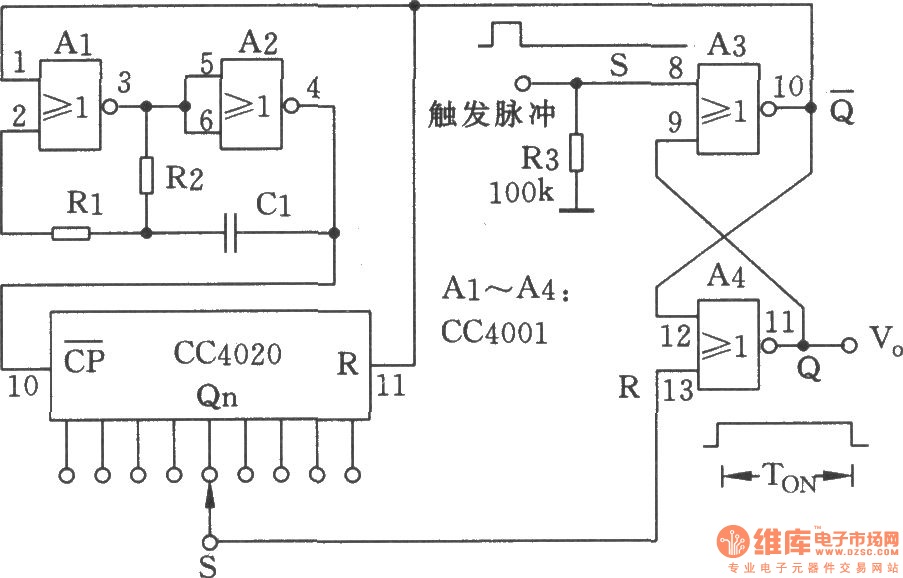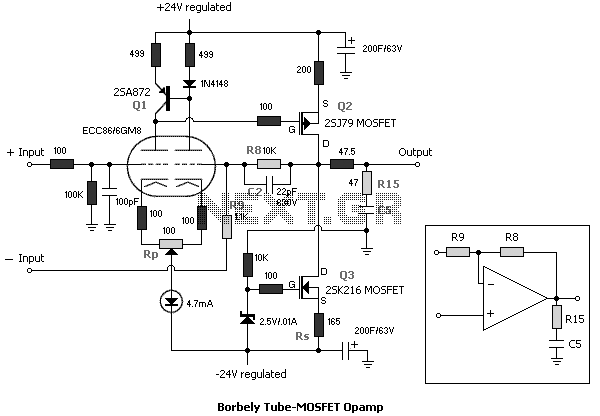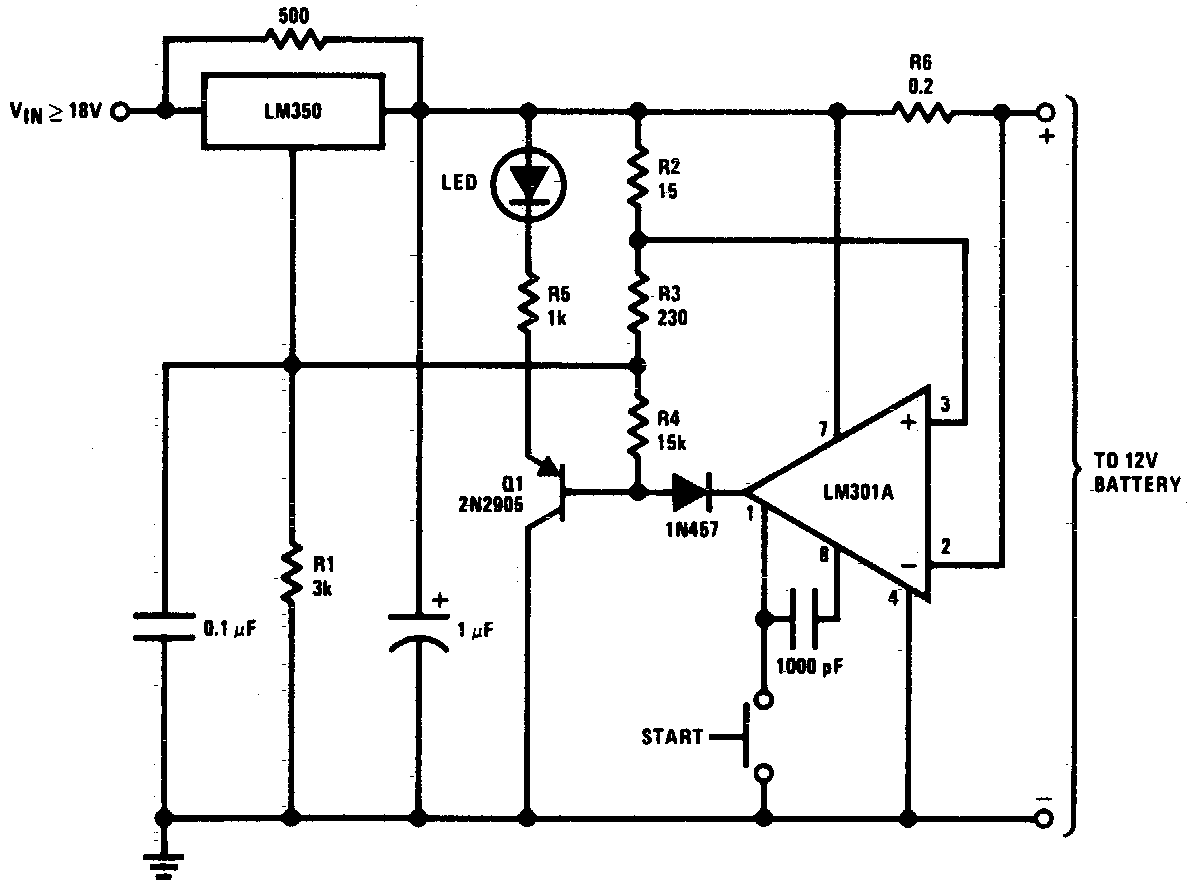
NC monostable multivibrator circuit

The NC monostable multivibrator circuit depicted in the chart consists of four 2-input NOR gates (CC4001) and a 14-bit binary serial counter/divider (CC4020). It is primarily utilized as a time delay switch or timer in automatic control equipment.
The NC monostable multivibrator circuit is designed to provide a single output pulse in response to an input trigger. The circuit's operation is based on the characteristics of the NOR gates and the binary counter. The four 2-input NOR gates (CC4001) are configured to achieve the necessary logic functions that enable the monostable operation. When a trigger signal is applied, the NOR gates generate a high output for a predetermined duration, dictated by the timing components connected to the circuit.
The timing aspect is managed by the 14-bit binary serial counter/divider (CC4020), which counts the clock pulses generated by an external oscillator or timing circuit. The output pulse width can be adjusted by varying the resistor and capacitor values associated with the timing components. This flexibility allows for precise control over the timing interval, making the circuit suitable for various applications in automatic control systems, such as delay switches, timers, or pulse generators.
In practical applications, the monostable multivibrator can be employed in scenarios where a temporary action is required following a specific event, such as turning on a device for a set amount of time after a button press. The incorporation of the CC4020 allows for scalability in timing intervals, enabling a wide range of operational conditions to be met. Proper implementation of this circuit can enhance the functionality and reliability of automated systems.The NC monostable multivibrator circuit shown in the chart is composed of four 2 input NOR gate CC4001 and 14-bit binary serial counter / divider CC4020. It mainly used as time delay switch or timer in automatic control equipments.. 🔗 External reference
The NC monostable multivibrator circuit is designed to provide a single output pulse in response to an input trigger. The circuit's operation is based on the characteristics of the NOR gates and the binary counter. The four 2-input NOR gates (CC4001) are configured to achieve the necessary logic functions that enable the monostable operation. When a trigger signal is applied, the NOR gates generate a high output for a predetermined duration, dictated by the timing components connected to the circuit.
The timing aspect is managed by the 14-bit binary serial counter/divider (CC4020), which counts the clock pulses generated by an external oscillator or timing circuit. The output pulse width can be adjusted by varying the resistor and capacitor values associated with the timing components. This flexibility allows for precise control over the timing interval, making the circuit suitable for various applications in automatic control systems, such as delay switches, timers, or pulse generators.
In practical applications, the monostable multivibrator can be employed in scenarios where a temporary action is required following a specific event, such as turning on a device for a set amount of time after a button press. The incorporation of the CC4020 allows for scalability in timing intervals, enabling a wide range of operational conditions to be met. Proper implementation of this circuit can enhance the functionality and reliability of automated systems.The NC monostable multivibrator circuit shown in the chart is composed of four 2 input NOR gate CC4001 and 14-bit binary serial counter / divider CC4020. It mainly used as time delay switch or timer in automatic control equipments.. 🔗 External reference





